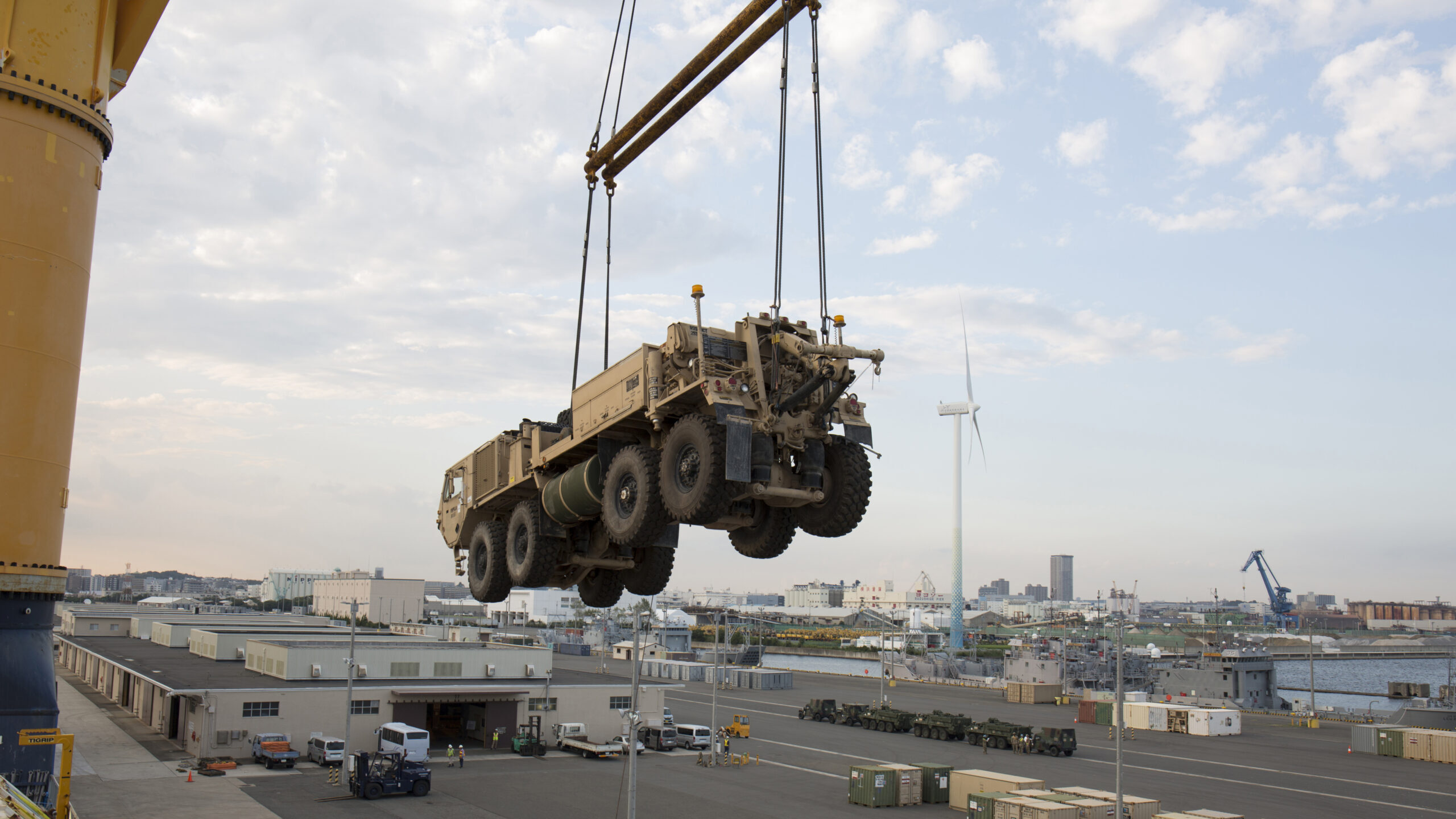
836th Transportation Battalion work alongside the 1st and 2nd Brigades, 25th Infantry Division, and Japanese contractors to offload equipment, September 8, 2017 at Yokohama North Dock. (Luis Casale / U.S. Army Japan)
Columbus, Ohio — Senior Army leaders want to have a copy of the long-awaited tactical wheeled vehicle strategy in hand by the end of the year to help guide their investment decisions for 2026 and beyond, according to a service official.
The Army is in the midst of a weapon modernization campaign with tentative plans to field or begin operational testing with 24 new capabilities this year and more in the outyear. While some of those items include soldier kit, others are larger platforms like the Mobile Protected Firepower “light tank,” Extended Range Cannon Artillery (ERCA) and future Optionally Manned Fighting Vehicle (OMFV) that may need to be transported around landlocked Europe’s roads, or inside the Indo-Pacific region. Long story short: The Army needs to figure out what mix of vehicles it will need of two very different theaters.
To help Army leaders make some of those critical logistical decisions, Chief of Army Transportation Corps Col. Beth Behn said Wednesday that her team must deliver an updated tactical wheeled vehicle strategy to leadership around the November 2023 timeframe.
“My charge is to have that strategy developed and handed to Army senior leaders before the holidays, so that they’ve time to consider that before heading into the [Program Objective Memorandum] POM 2026 offsite in January,” she told industry at a National Defense Industrial Association conference. Although Col. Behn said that plan is on track, she said it is not clear if and when the service will publicly release this document.
The Army’s tactical wheeled vehicle fleet ranges from lighter utility vehicles, such as Humvees and the Joint Light Tactical Vehicle to larger ones like the future Common Tactical Truck and Palletized Load System. So in addition to sorting out how many JLTVs soldiers might need and where, the service also needs to examine how to move heavy combat vehicles and other support equipment around differing theaters, while also striking the balance between sustaining legacy systems and investing in newer ones.
“The Army’s plans to change how it operates on the battlefield will affect its capabilities and requirements planning for vehicles within the TWV [tactical wheeled vehicles] portfolio,” the Government Accountability Office wrote in a July 2021 report about the forthcoming strategy.
In that report, the government watchdog recommended that the Army “routinely update” its TWV strategy “to account for evolving information and circumstances, and that it improves communication with industry.”
Although the Pentagon concurred, the service didn’t complete the updated strategy last year as anticipated so that it could help shape the fiscal 2025 budget. But if Col. Behn meets her new deadline, Army leaders will be able to use the strategy for 2026 and beyond.






















